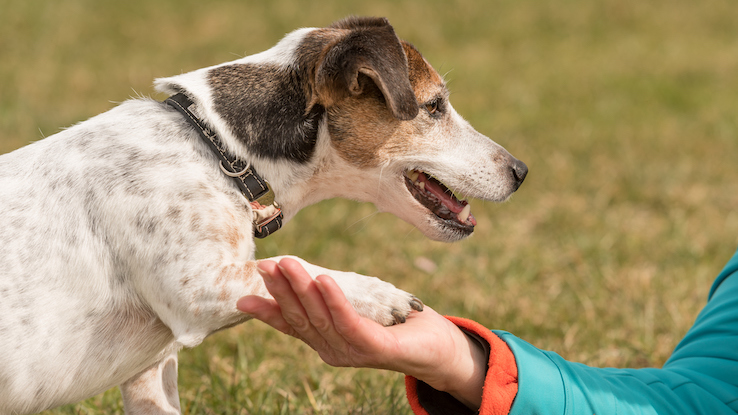7 Ways Dogs Communicate – and What They’re Trying to Say

Dogs rely on many behaviors to communicate, both with each other as well as with humans. Though a lot of their communication is similar between species, there are some differences.
How Do Dogs Communicate with Each Other?
Unlike our favorite dogs in the movies, dogs can’t speak to each other the way humans do. Instead, they rely on body language, vocalizations and physical encounters to get their point across.
How Do Dogs Communicate with Humans?
Dogs communicate with humans the same way they talk to each other. That’s all they know, after all. So, if you’re wondering why your dog rolls around in the grass, or why dogs lick, learning a bit about their communication style can unlock some of the biggest mysteries of being a pet owner.
7 Ways Dogs Communicate
Eating Things They Shouldn’t
Do you ever wonder, “Why is my dog eating grass, toys, socks, paper towels and just about anything else they can get their paws on?” You aren’t alone. Often, this seemingly strange behavior is a dog’s way of saying they are missing a needed nutrient in their diet or they are bored and need more stimulation.
Barks, Whines, Howls and Growls
All dogs vocalize to express themselves. Many owners can tell the difference between their dogs’ vocalizations. For example, a dog may whine differently when they need to go outside versus when they want a treat. From barks to get your attention to a growl to say “stop that,” these noises are the closest a dog can get to talking.
The Tell-Tale Tail
A dog’s tail can tell us a lot about how they are feeling. A vigorously wagging tail means a dog is excited, but what does it mean when a dog’s tail is wagging slowly? That means they are being cautious. A relaxed tail means your dog is content, while a tail held high means they’re on alert.
Yawns and Sneezes
When dogs are in uncomfortable situations, they may yawn or sneeze to express their discomfort. These not-so-obvious ways of communication are vitally important to pay attention to. When a dog is yawning or sneezing, they are trying to tell you they are in an uncomfortable situation.
Doggy Body Language
The subtle things dogs do are their biggest forms of communication. Things like exposing their belly and lying at your feet are their special way of saying that they trust you. Dogs also use their paws to communicate. Dogs will paw to get attention. If you’re wondering why your dog paws at its face, it could be anxiety or a small injury.
Stares and Winks
Have you ever wondered why your dog is staring at you? Or have you ever noticed your dog winking at you? This confusing behavior is your dog saying “I love you.” Prolonged eye contact is a sign of trust, respect and love in the dog world.
Chewing and Other Destruction
Once a dog has left the puppy stage, destructive behavior should decrease or stop entirely. If your dog is still chewing things or destroying things once they’re older, they’re probably trying to tell you that they need more exercise, attention and stimulation.
How to Communicate With Your Dog
Once you have an idea of what your dog is trying to tell you, you can begin to communicate back. Communication with dogs should always be calm and assertive. So, whether you’re letting your dog know that you love them or you’re telling them not to eat your favorite shoes, being gentle yet direct is the best way to communicate back to your dog.
Can Dogs Communicate With Buttons?
If you want to take talking to your dog one step further, look into using speech buttons to communicate. This idea has become increasingly popular among dog owners who want to communicate with their dogs. It may take a lot of training, but it’s worth a try to be able to talk to your pup.





